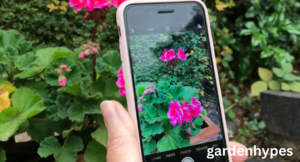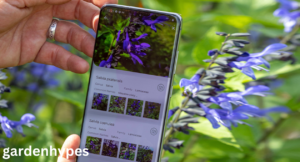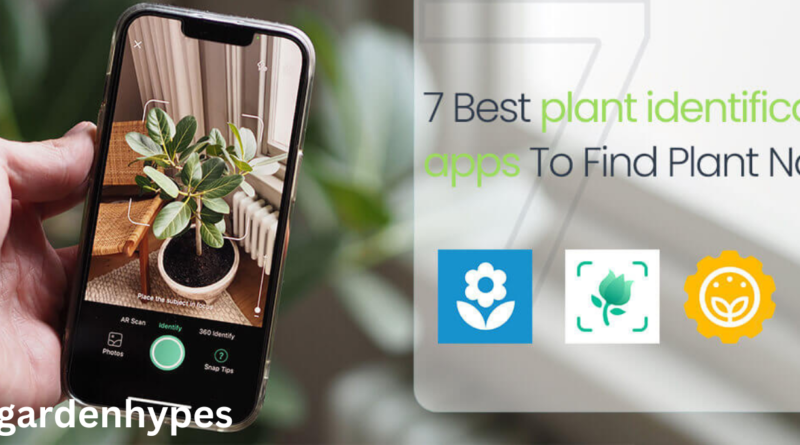Best Free Plant Identification App for Nature Enthusiasts
Introduction to Plant Identification Apps
Why Identifying Plants Matters
Plants are everywhere—in our gardens, hiking trails, parks, and even cracks in sidewalks. Yet, many of us struggle to name the plants we see. Knowing about plants is not just for botanists; it’s for anyone who wants to connect with nature. Best Free Plant Identification App can help you discover which ones are edible, medicinal, or harmful. For gardeners, it’s an easy way to learn how to care for different flowers, shrubs, or trees.
click in link large tall weeds with thick stalks
Imagine walking in a forest and spotting a plant with bright berries. Without knowing what it is, you might be missing out on something edible—or risking your safety if it’s poisonous. This is where plant identification becomes useful. It transforms a simple walk into a learning experience and helps us appreciate the biodiversity around us.
How Mobile Apps Make Plant Learning Easier
In the past, identifying plants meant carrying heavy guidebooks or consulting experts. Today, smartphones have changed that. With just a photo, you can discover the plant’s name, details, and growing conditions. Free plant identification apps make this process even more accessible for beginners and nature lovers.
The beauty of these apps is that they are convenient, fast, and educational. Instead of spending hours flipping through pages, you get answers in seconds. Some apps even store your discoveries in a personal library, turning your phone into a pocket field guide.
Features to Look for in a Plant Identification App
Accuracy of Results
The most important feature of any plant ID app is accuracy. If an app regularly misidentifies plants, it defeats the purpose. Accuracy often depends on the size of its database and the number of users contributing photos. Apps with millions of uploads tend to provide more reliable results.
Offline Use
Not every hike or outdoor trip comes with internet access. That’s why some plant apps allow offline use, letting you store information or identify plants even without a connection. This is especially useful for hikers, campers, and travelers.

Ease of Navigation
No one wants to use a complicated app in the middle of the woods. A good app should have a simple design, quick photo uploads, and clear results. Easy-to-understand layouts make it beginner-friendly.
Extra Tools and Community Support
Some apps offer more than identification. They include care tips, community discussions, plant diaries, or even connections to environmental projects. Having access to a community of plant lovers adds another layer of learning, as you can share your findings and learn from others.
click in link large tall weeds with thick stalks
Top Free Plant Identification Apps
PlantNet
PlantNet is one of the most popular free plant ID apps. Developed by scientists, it relies on millions of photos submitted by users. The app is excellent for identifying wild plants and garden species. Its interface is simple: take a photo, upload it, and get suggestions. What makes PlantNet stand out is that your contribution also supports scientific research.
iNaturalist
Backed by the California Academy of Sciences and National Geographic, iNaturalist is more than just an identification app. It’s a global community of nature enthusiasts and scientists. Every photo you upload contributes to biodiversity research. It’s perfect for people who want to learn and also contribute to environmental projects.
Seek by iNaturalist
Seek is a user-friendly version of iNaturalist, designed for beginners and children. Instead of overwhelming users with scientific details, Seek gives badges and achievements for identifying plants and animals. It makes nature exploration fun and interactive, especially for families.

LeafSnap
LeafSnap specializes in identifying trees and shrubs through photos of leaves. It’s particularly useful for urban environments and forest walks. Along with identification, it offers high-quality images that make learning more visual and engaging.
Flora Incognita
This app is especially strong in Europe but is expanding globally. It provides accurate results along with detailed descriptions of plant species. Flora Incognita also works well offline, which is a bonus for travelers.
PictureThis (Free Version)
While PictureThis has a premium version, its free features are still very useful. It provides quick plant identification, care tips, and even disease detection for garden plants. For home gardeners, it’s one of the most practical apps.
Comparing the Best Plant Identification Apps
Usability
PlantNet and Seek are the easiest for beginners. iNaturalist is more advanced, suited for those who enjoy contributing to research. PictureThis adds value for gardening.
Plant Species Coverage
iNaturalist and PlantNet cover a wide range of species worldwide, while LeafSnap focuses more on trees and shrubs. Flora Incognita is very reliable in Europe but growing globally.
click in link large tall weeds with thick stalks
Additional Benefits
- PlantNet: Supports science.
- iNaturalist: Connects you to a global community.
- Seek: Fun and gamified for kids.
- PictureThis: Useful care tips for gardeners.
FAQs
1. Are free plant identification apps reliable?
Most free plant identification apps are reliable, but the accuracy depends on the quality of the photo and the app’s database. Apps like PlantNet and iNaturalist are highly trusted because they are backed by scientists and supported by large communities. For the best results, use multiple apps to confirm the identification.
2. Which app is most beginner-friendly?
If you’re just starting, Seek by iNaturalist and PlantNet are great choices. Seek is designed to be simple and fun, while PlantNet is straightforward and easy to navigate. Both work well for beginners who want quick answers without too much complexity.
3. Can these apps identify houseplants?
Yes, many of these apps can identify both outdoor and indoor plants. PictureThis and LeafSnap are particularly useful for gardeners and houseplant owners because they often include care tips and disease detection features.
4. Do these apps work offline?
Some apps, like Flora Incognita, allow limited offline use, which is handy for hiking in areas without internet access. However, most apps perform best with a stable internet connection since they need to access their databases to provide accurate results.
5. Are they completely free?
Most apps are free to download and use, but some offer premium versions with extra features like unlimited identifications, care guides, or ad-free experiences. Apps like PlantNet and iNaturalist are completely free, while PictureThis has both free and paid options.
